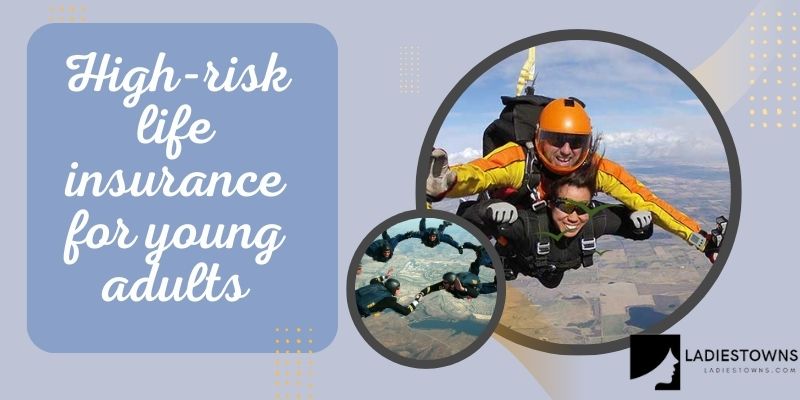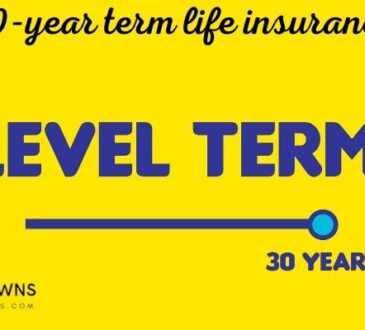
The insurance provider evaluates your age, gender, medical history, and way of life when you apply for a life insurance policy to assess your eligibility and decide your premium. Most people have no trouble obtaining insurance if they don’t have any serious health issues. Some young adults, however, have risk factors that make them a greater risk to insurance companies. It can be helpful to know what these high-risk applicants’ options are since they still have High-risk life insurance for young adults. ladiestowns.com will provide for you some information about High-risk life insurance for young adults.
What makes you a High-risk life insurance for young adults applicant?

High-risk life insurance for young adults applicants are those who provide a greater chance of loss to life insurance firms. Each life insurance company has a distinct definition of high-risk applicants. However, life insurance companies could see you as a high-risk applicant if you smoke, have bad health, a risky hobby like skydiving, have a dangerous profession, or have underlying medical issues.
Medical risk factors
The following conditions are known to shorten a patient’s life expectancy, and as a result, most applicants for life insurance fall into the high-risk category.
- certain cancers: Cancer patients and survivors may have expensive and constrained life insurance coverage. However, you might or might not be classed as high risk depending on the type of cancer you were diagnosed with, whether you received a successful therapy, and how long you have been in remission. For instance, you can still be qualified for special pricing on conventional life insurance if your basal cell carcinoma was surgically removed.
- Chronic Conditions: Because chronic health issues like high blood pressure or heart disease can shorten your life expectancy, insurance companies frequently view candidates who have them as higher-risk.
- Heart Attack: Although it will probably make you a higher-risk applicant, you can usually still receive life insurance after having a heart attack. Your general health and how long it has been since your heart attack are typically taken into account by your life insurance provider.
Lifestyle

A key additional aspect that influences your life insurance risk is your way of living. Based on factors like your employment, lifestyle, and the types of hobbies you enjoy, you could be classified as high-risk even if you have no health issues or a family history of illness:
- Occupation: Life insurance firms look at your line of work to assess the level of risk you encounter every day. Among the high-risk professions include underground miners, steelworkers, construction workers, and commercial fishermen. In 2019, there were 145 fatalities associated with fishing and hunting for every 100,000 workers, according to the Bureau of Labor Statistics.
- Hobbies: If you consider yourself to be an adrenaline junkie, you likely belong to the high-risk category. If you participate in potentially risky sports like skydiving, motorcycle racing, mountaineering, or scuba diving, insurance providers want to know.
- Nicotine use: Smoking is harmful to your health and can make illnesses like COPD and some types of cancer worse. If you smoke, vape, or chew tobacco, it’s likely that life insurance companies will consider you to be high-risk. You may still be vulnerable to high rates even if you once smoked but have subsequently quit. Importantly, smokers can frequently obtain life insurance, but you should be prepared to pay more than usual.
- Alcohol consumption: If you consume more alcohol than is advised, life insurance companies may view you as a high-risk client. Alcohol abuse can lead to additional health issues and raise the possibility of accidents.
How do High-risk life insurance for young adults rates work?

Most of the biggest life insurance firms classify applicants into one of the following rating categories according to their level of risk in order to determine rates. Keep in mind that not all companies use the same classes for underwriting. However, applicants are frequently assigned to one of the following underwriting classes by life insurance companies:
- Preferred Select or Preferred Plus: This rating category is likely to include the healthiest candidates who have a clean bill of health, no history of genetic disorders in their families, no high-risk professions or pastimes, and no bad habits like smoking.
- Applicants who are preferred are normally in good health but may have one or two negative points against them. For instance, they might have a minor medical condition or a moderately dangerous activity.
- Standard: If you fall into this category due to a few minor health conditions or a risky lifestyle, you should expect to pay higher premiums than those in the preferred plus and preferred categories.
- High-risk applicants who are deemed substandard by the insurance provider fall into this category. These candidates might have hazardous occupations, risky pastimes, or health problems.
- Preferred tobacco: Candidates who have given up smoking or who otherwise qualify for the preferred tobacco rating group will probably pay less than those in the standard tobacco group.
How to find High-risk life insurance for young adults
You might not be eligible for standard underwritten coverage if you are viewed as a high underwriting risk. Guaranteed acceptance life insurance might be an alternative if you are unable to obtain normal underwritten policy. The pricing for the policy are determined by your age, region, and gender and don’t involve any medical tests or lifestyle questions. A two-year waiting period is customary for guaranteed acceptance insurance before your beneficiaries can get the death benefit.
Researching your alternatives and obtaining quotes from a few different providers may prove helpful in locating the most cost High-risk life insurance for young adults coverage. You might find it advantageous to speak with an impartial life insurance adviser who can help you select the company that would best suit your needs.





